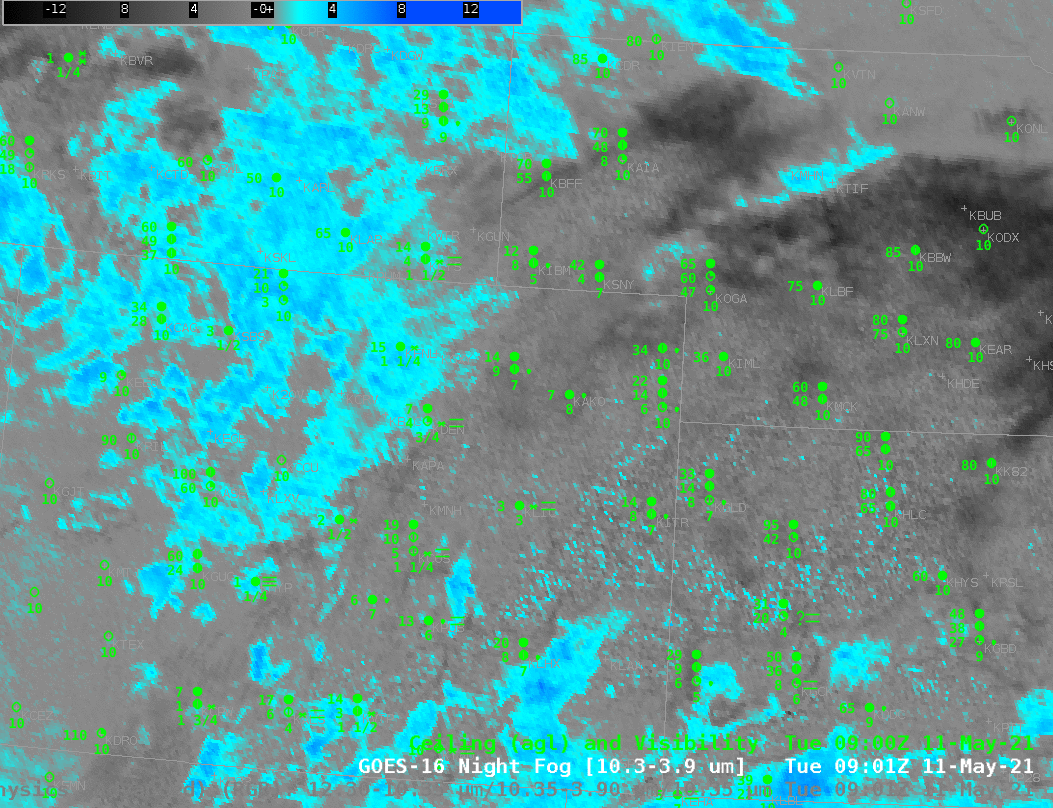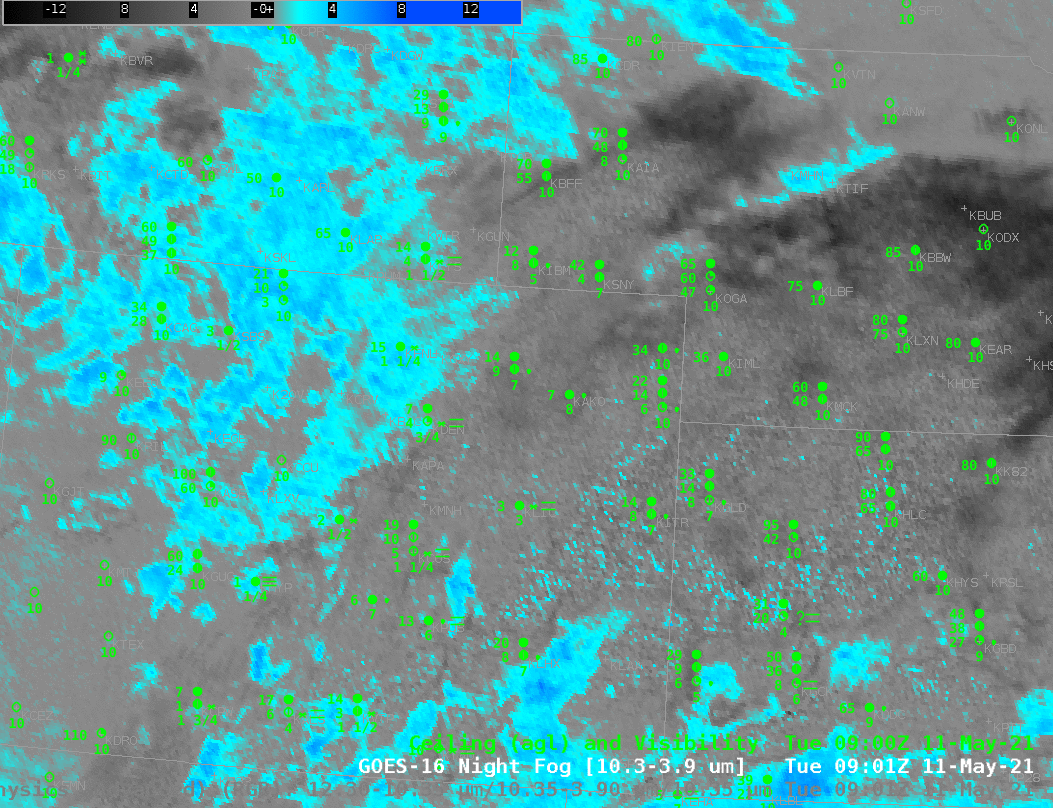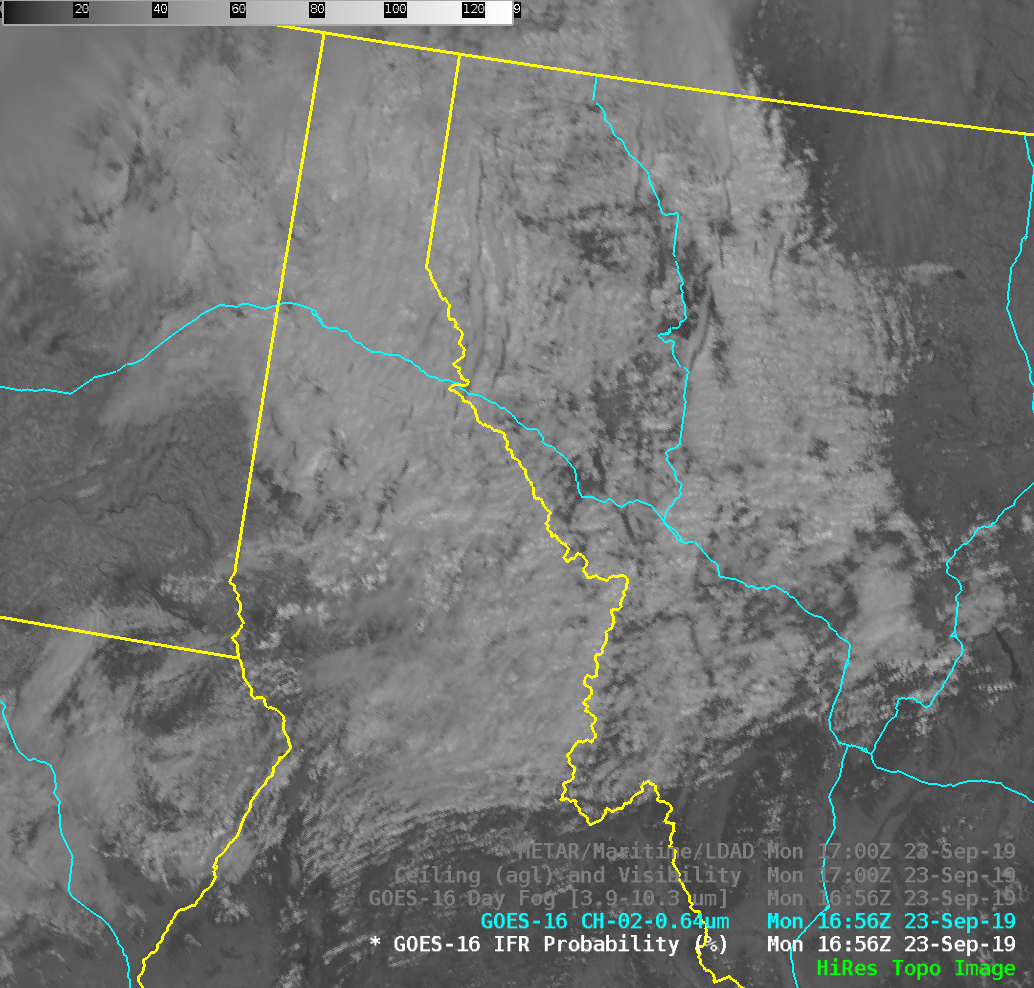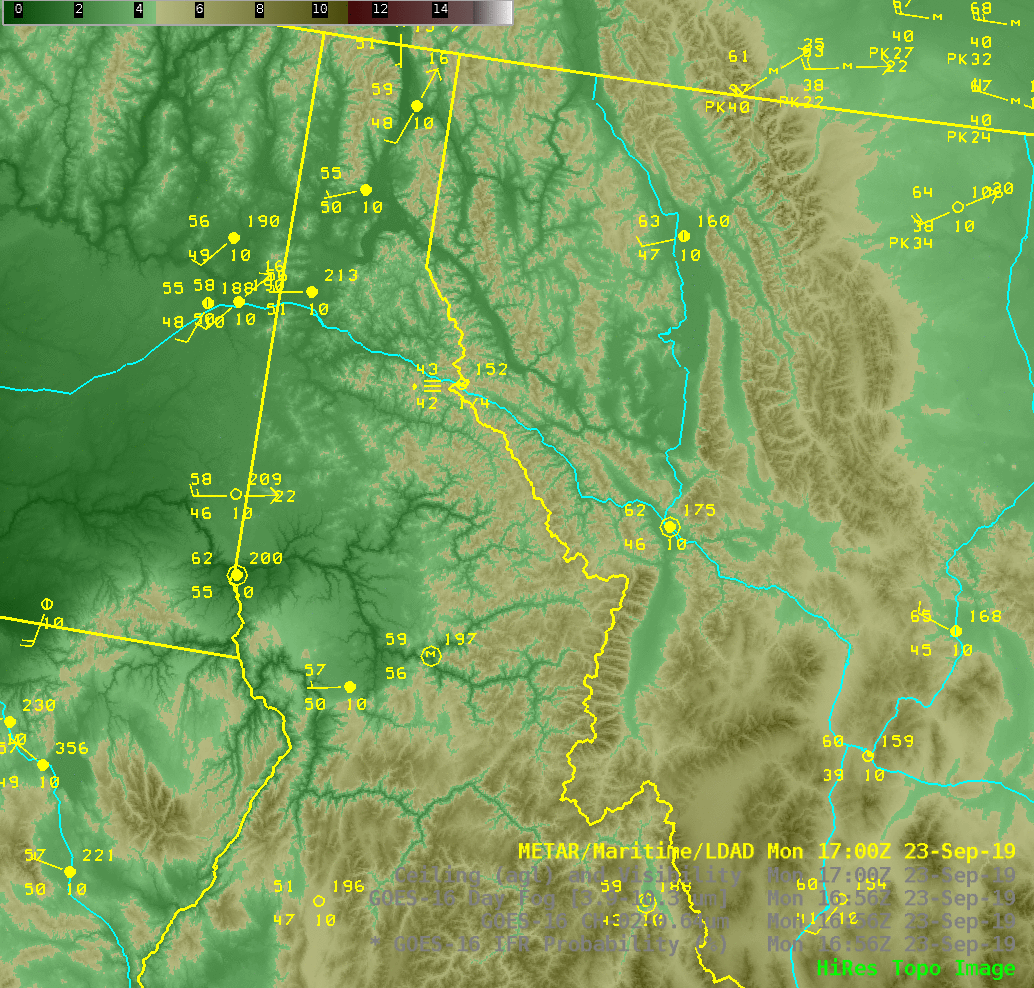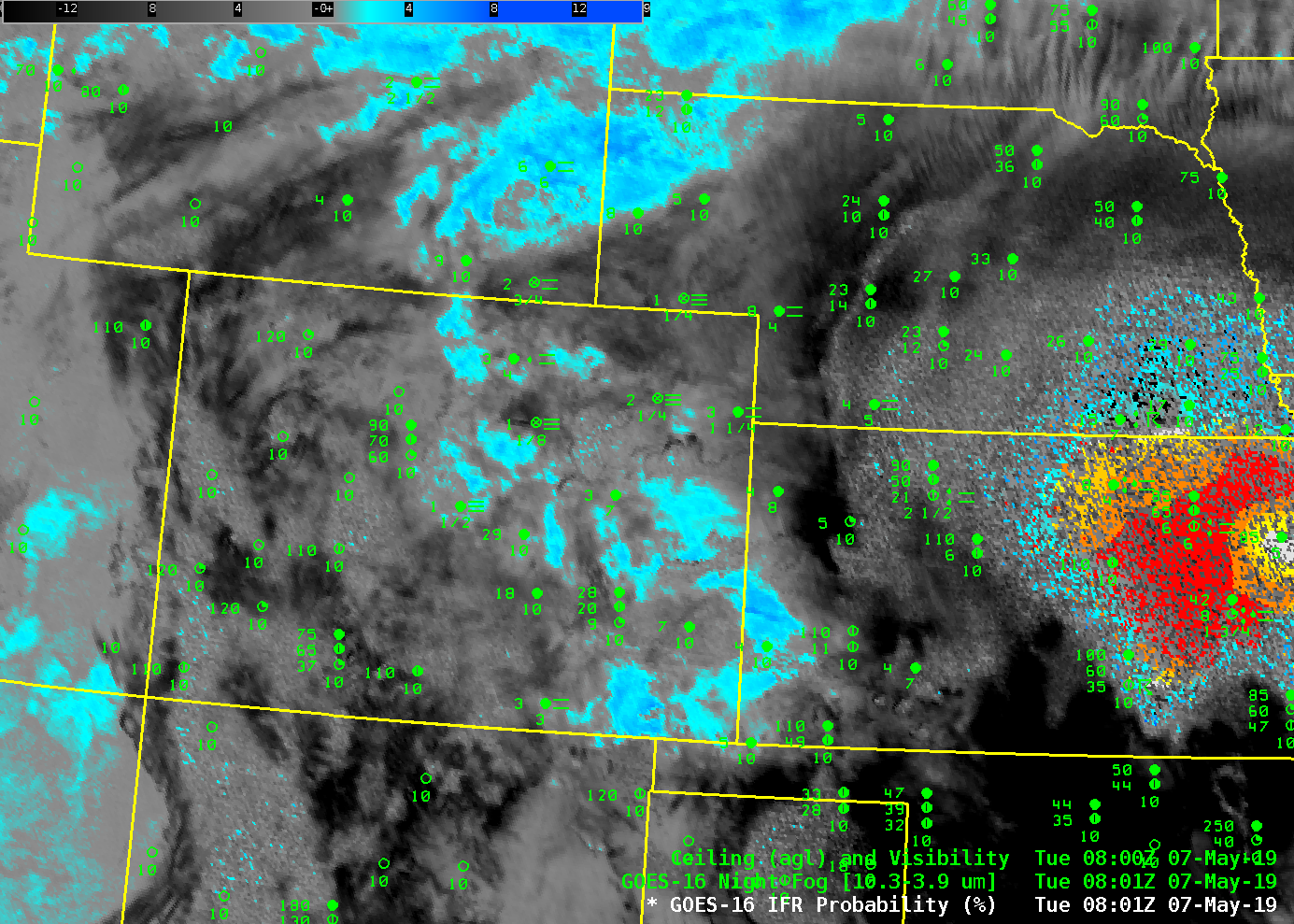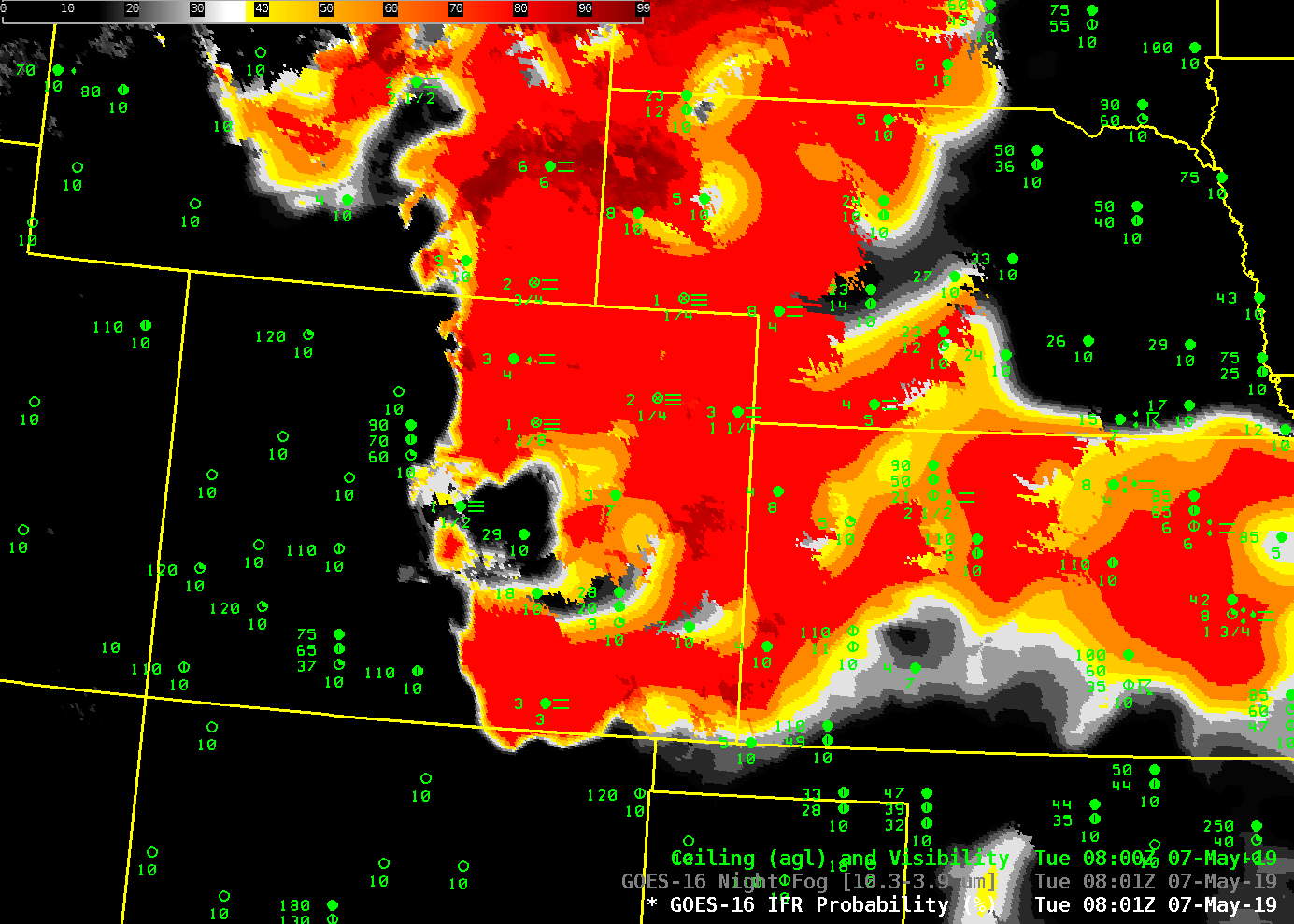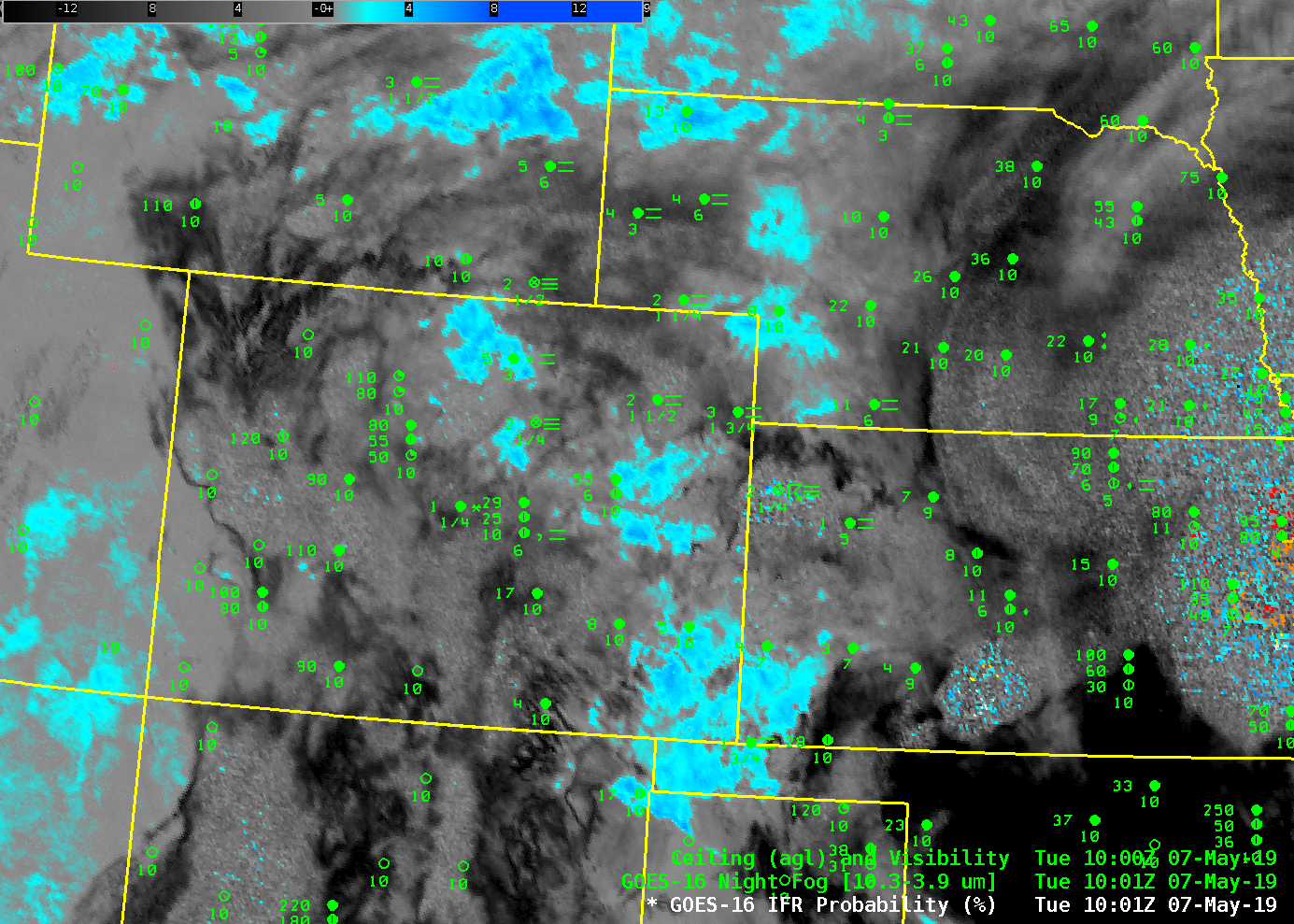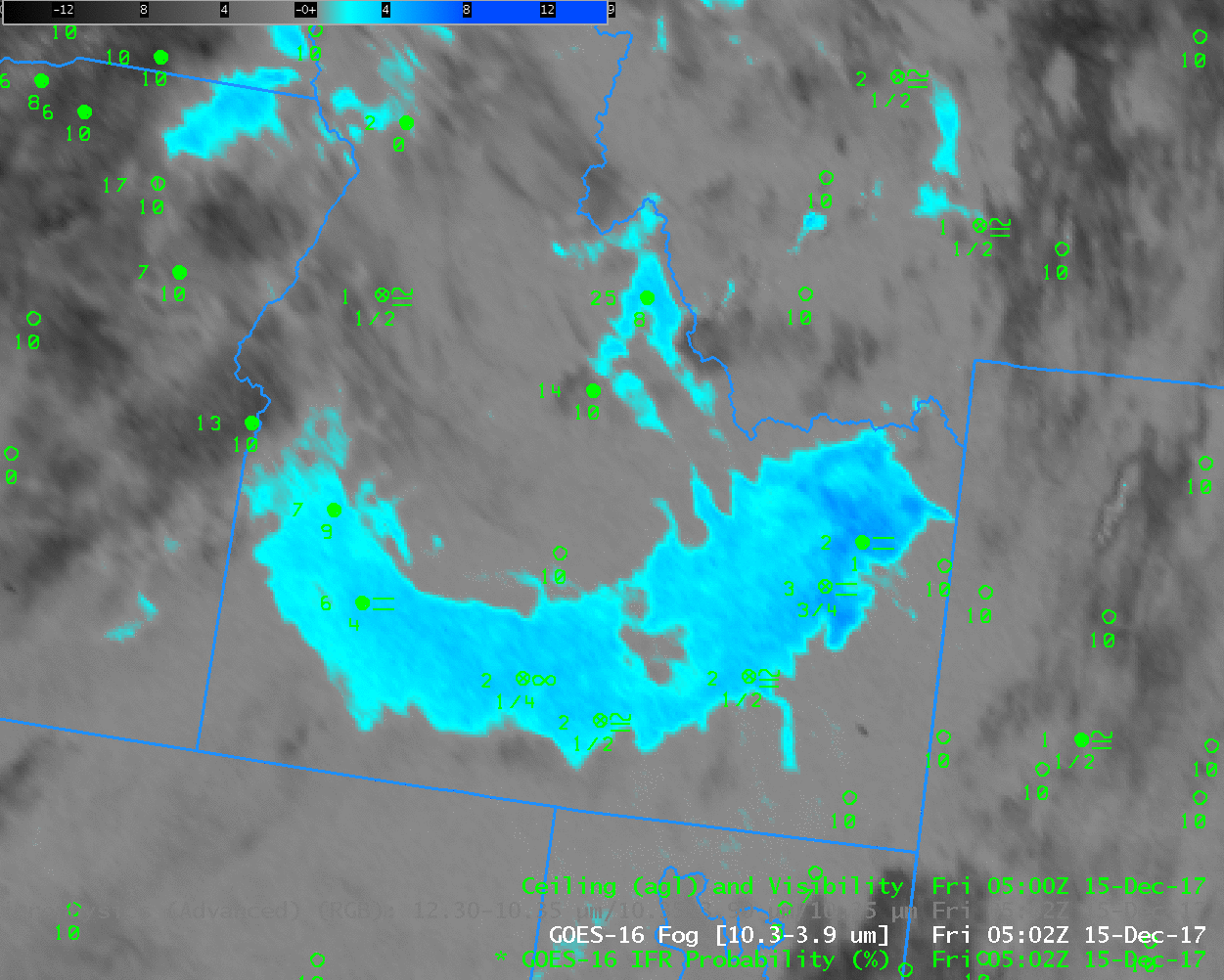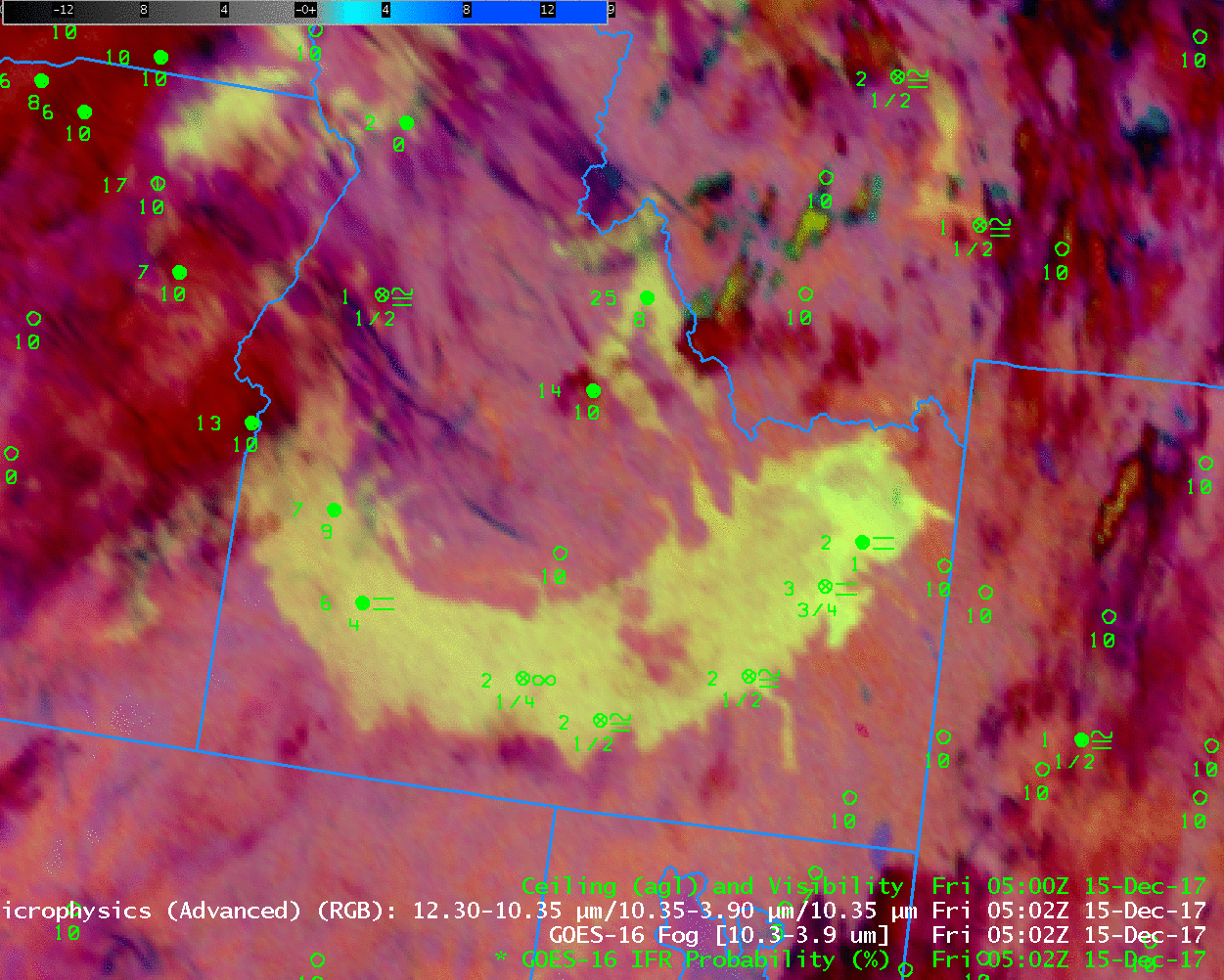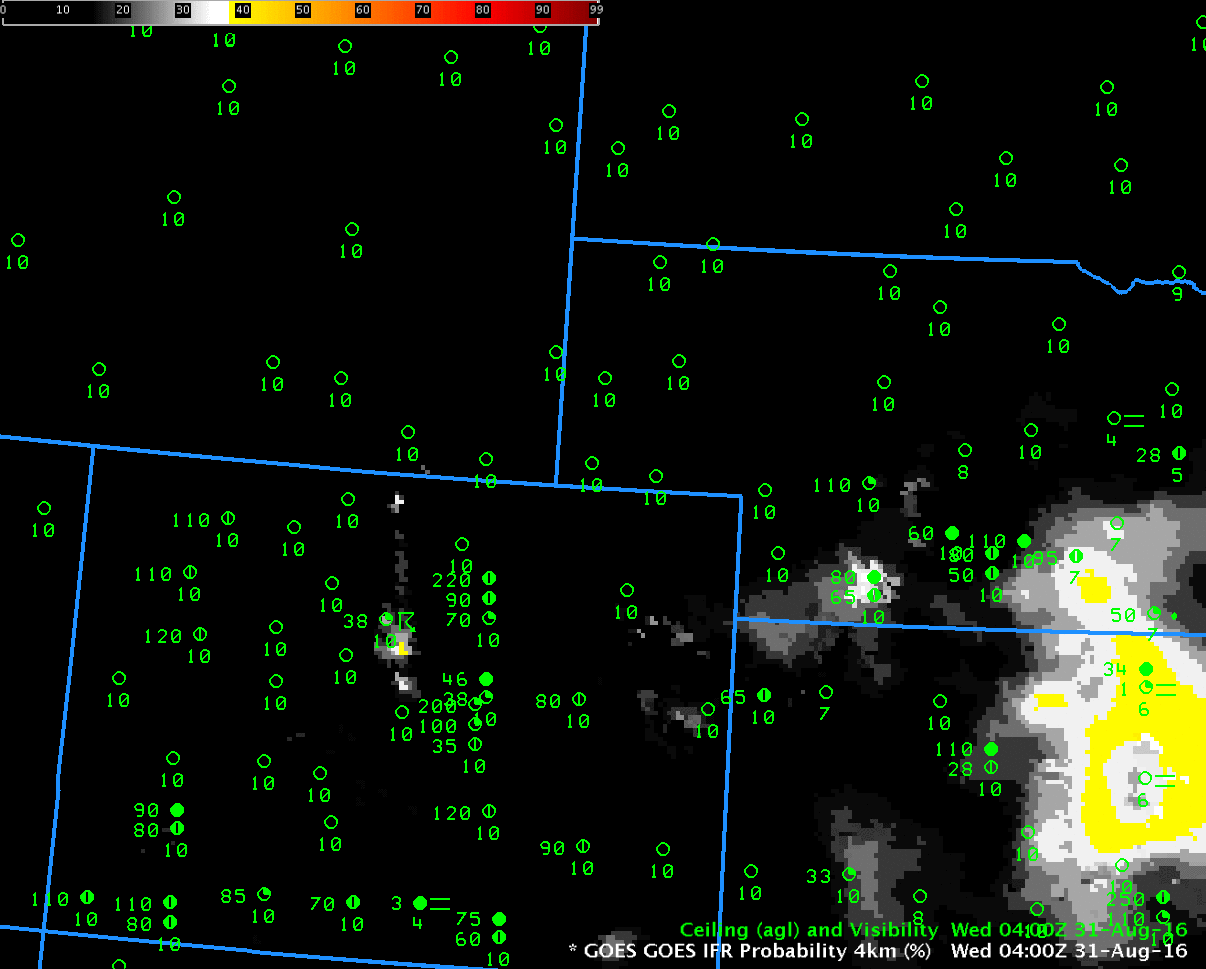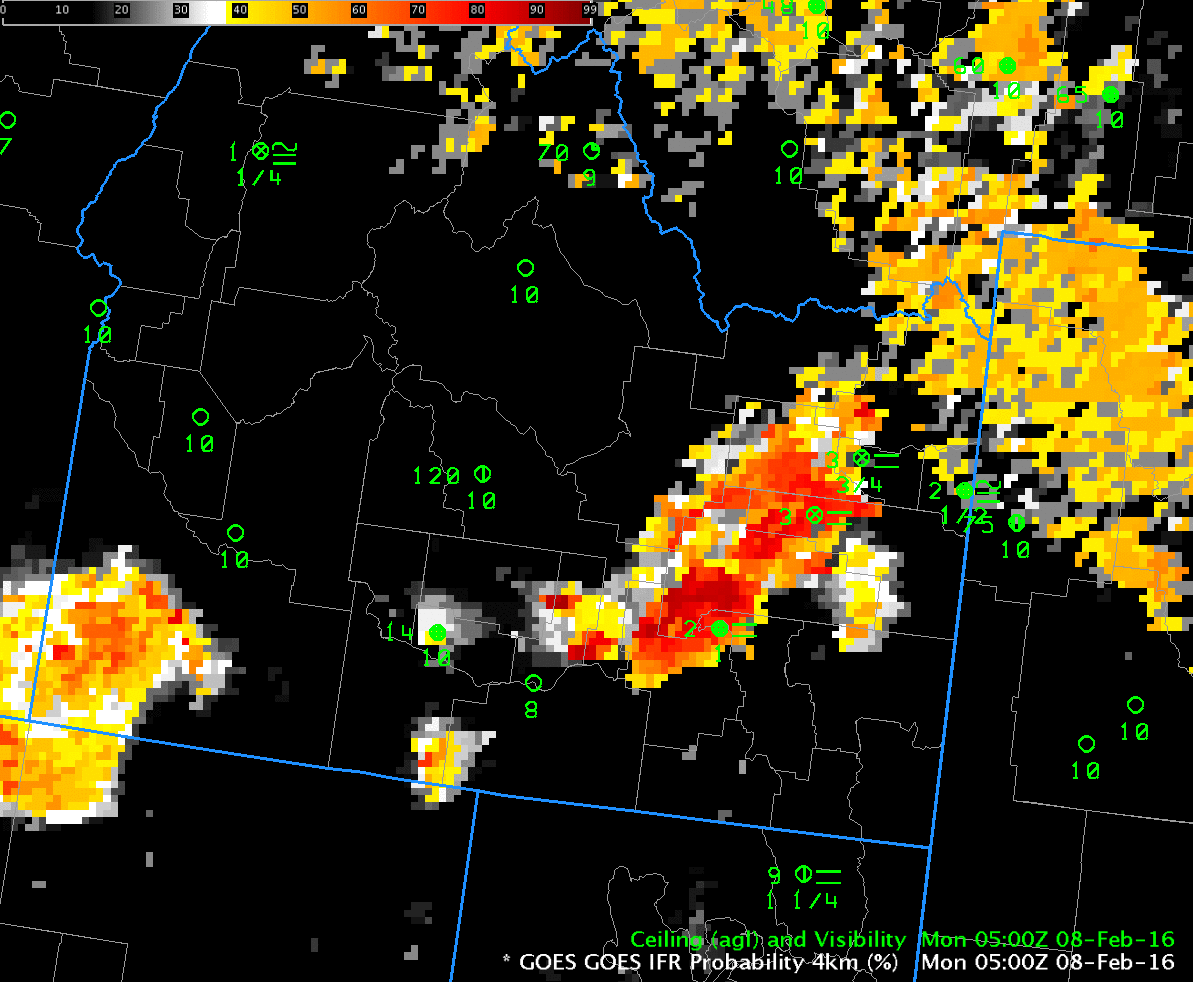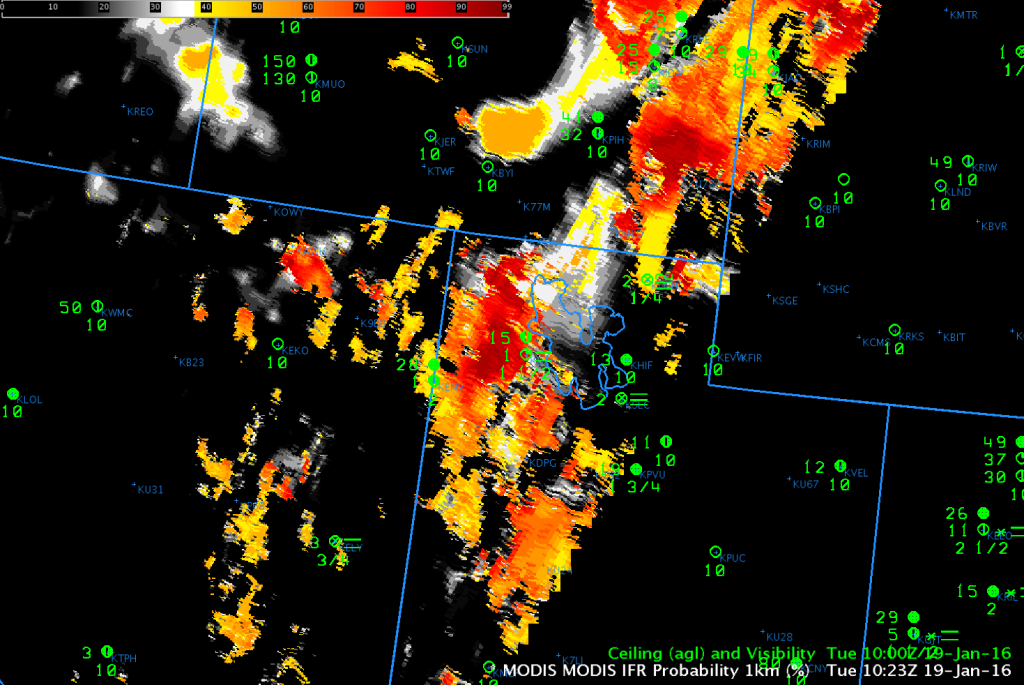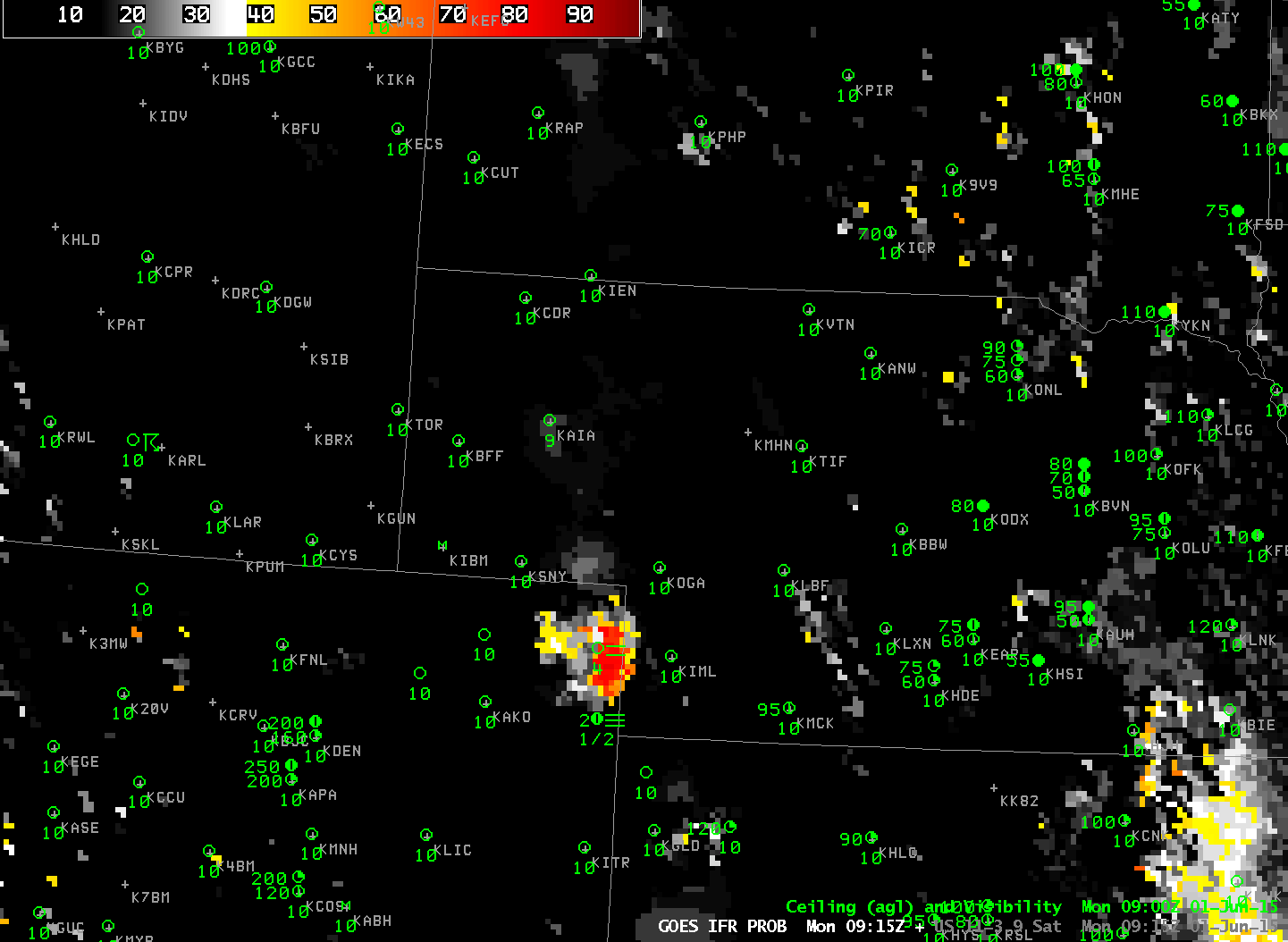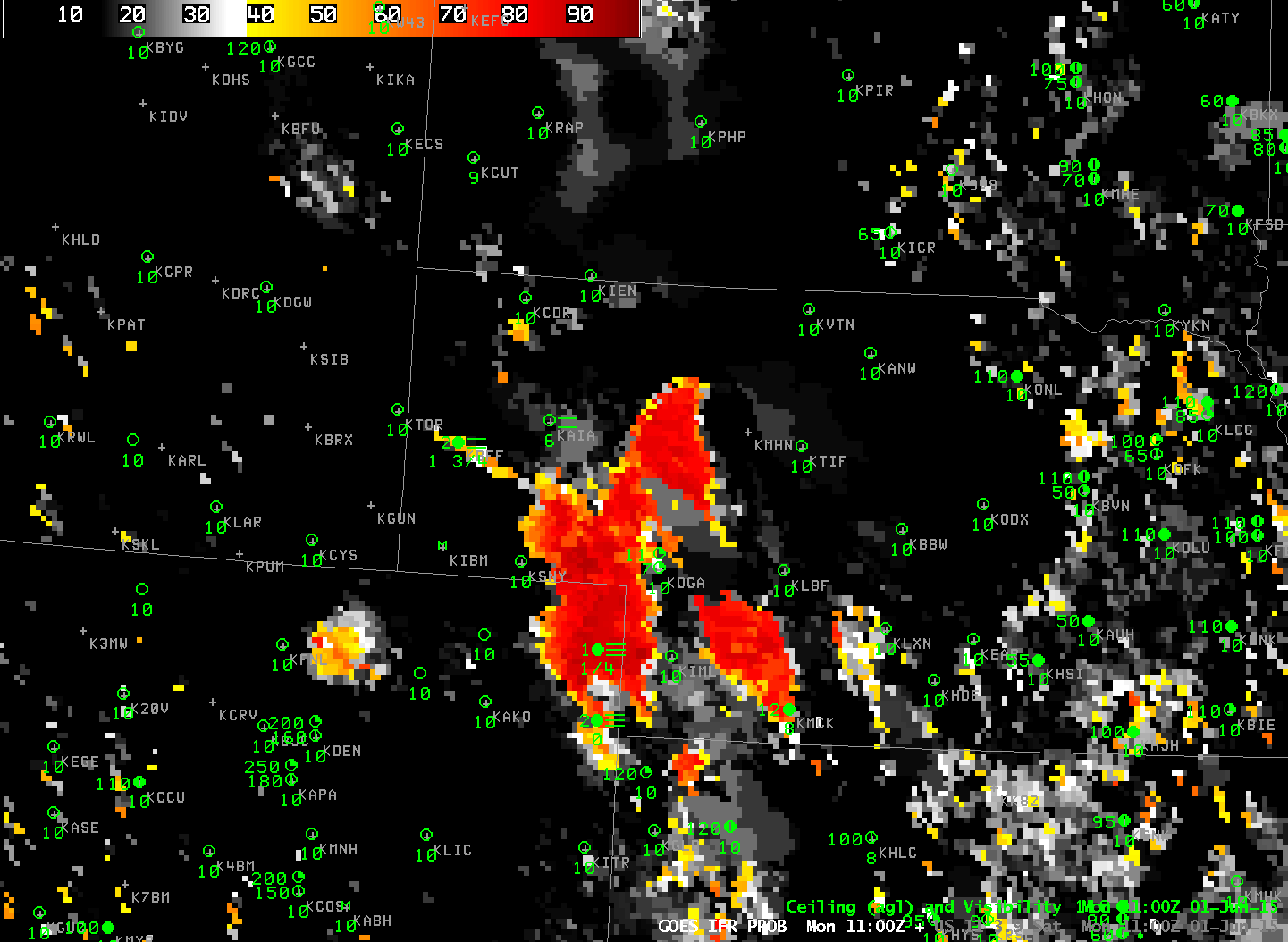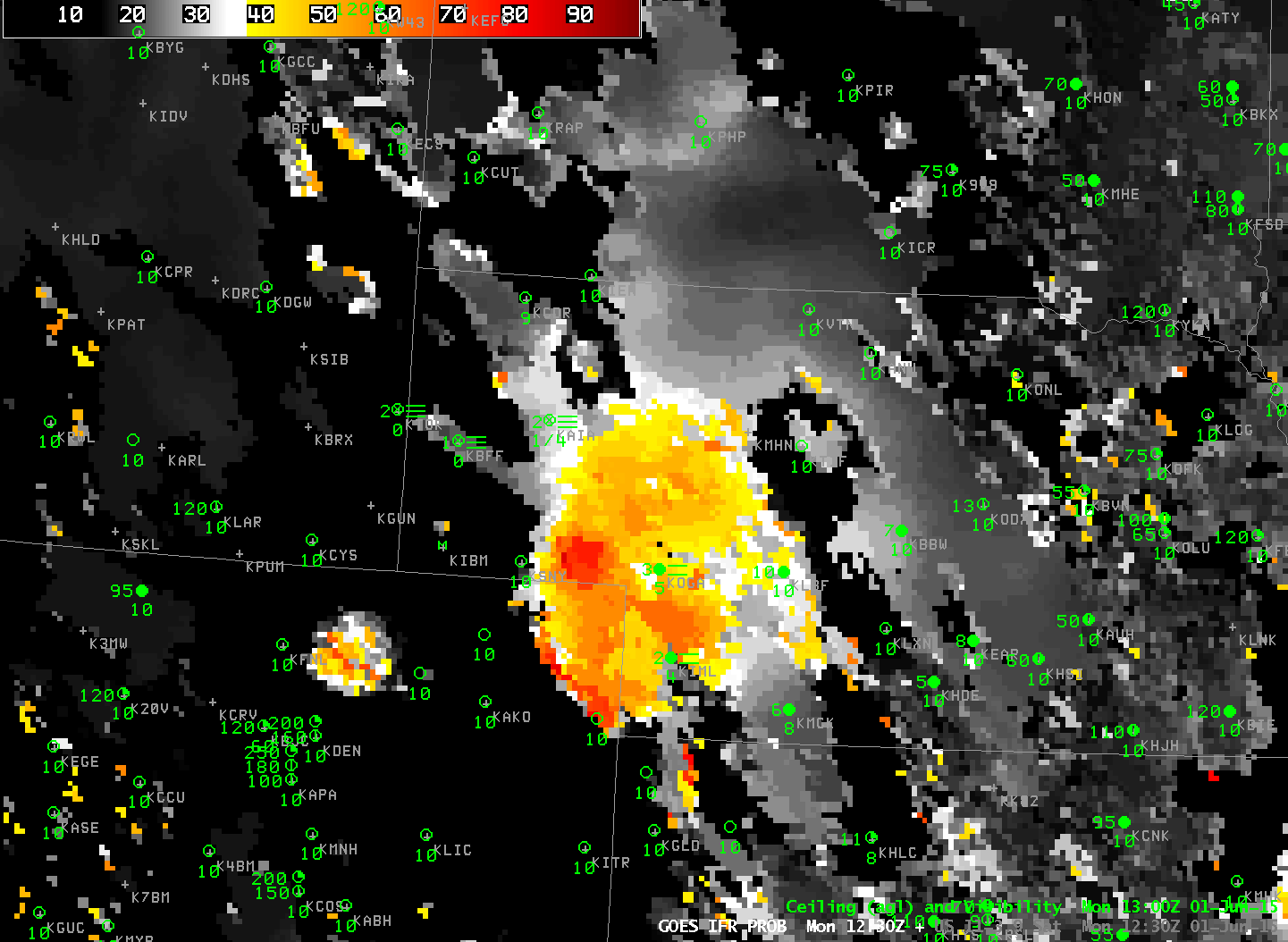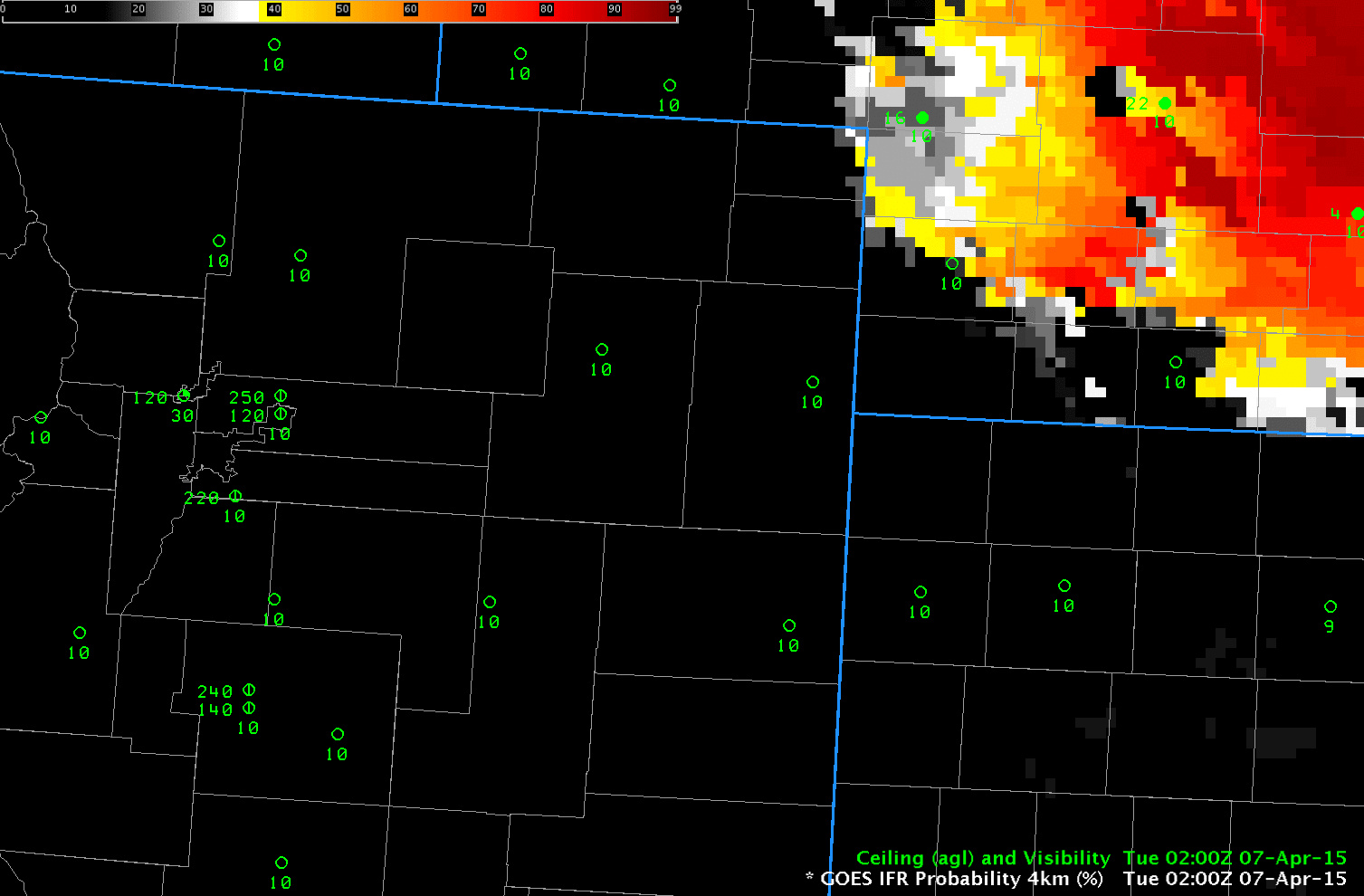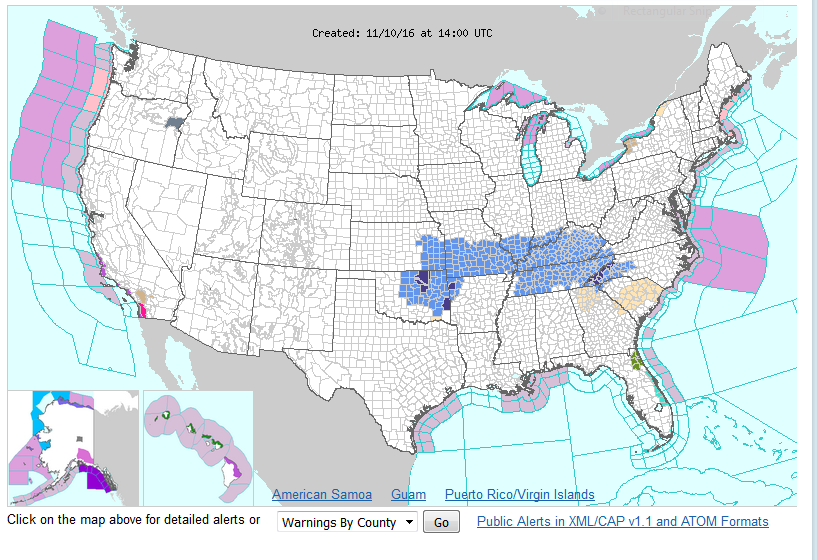
Hazards as depicted by http://weather.gov front page at 1400 UTC on 10 November 2016 (Click to enlarge)
Isolated regions of dense fog developed over eastern Oregon early in the morning on 10 November 2016, and one county — around Baker City — was placed in a Dense Fog advisory (Counties in the Willamette Valley of western Oregon, and near Glacier Park in Montana were placed under Dense Fog Advisories a bit later in the morning on 10 November). Click here to see a 1400 UTC mapping of IFR/LIFR conditions from the Aviation Weather Center.
URGENT – WEATHER MESSAGE
NATIONAL WEATHER SERVICE BOISE ID
600 AM MST THU NOV 10 2016
ORZ062-101800-
/O.NEW.KBOI.FG.Y.0012.161110T1300Z-161110T1800Z/
BAKER COUNTY-
500 AM PST THU NOV 10 2016
…DENSE FOG ADVISORY IN EFFECT UNTIL 10 AM PST THIS MORNING…
THE NATIONAL WEATHER SERVICE IN BOISE HAS ISSUED A DENSE FOG
ADVISORY…WHICH IS IN EFFECT UNTIL 10 AM PST THIS MORNING.
* VISIBILITY…ONE QUARTER MILE OR LESS.
* IMPACTS…TRAVEL HAZARD DUE TO POOR VISIBILITY…ESPECIALLY
ALONG INTERSTATE 84 BETWEEN BAKER CITY AND NORTH POWDER
PRECAUTIONARY/PREPAREDNESS ACTIONS…
A DENSE FOG ADVISORY MEANS VISIBILITIES WILL FREQUENTLY BE
REDUCED TO LESS THAN ONE QUARTER MILE. IF DRIVING…SLOW DOWN…
USE YOUR HEADLIGHTS…AND LEAVE PLENTY OF DISTANCE AHEAD OF YOU.
&&
$$
What kind of Fog-detection products are available to assist a forecaster in seeing at a glance that fog is developing? How useful are they for small-scale features such as that in Baker County Oregon?
Brightness Temperature Difference Fields (3.9 µm – 10.7 µm) have historically been used to detect fog; the difference field keys on the Emissivity Differences that exist in water-based cloud droplets: they do not emit 3.9 µm radiation as a blackbody, but do emit 10.7 µm radiation more nearly as a blackbody, so computed brightness temperatures are different: cooler at 3.9 µm than at 10.7 µm. The Brightness Temperature Difference fields for 0900 and 1200 UTC are shown below (Note the seam — GOES-13 data are used east of the seam, GOES-15 data are used to the west). There is no distinct signal over Baker County, nor any pattern that can really help identify regions of fog. Cirrus is present over western Oregon (depicted as dark grey or black in this enhancement); satellite-only detection of low fog is not possible if cirrus prevents a view of the surface.

GOES Brightness Temperature Difference Fields (3.9 µm – 10.7 µm) at 0900 and 1200 UTC on 10 November 2016 (Click to enlarge)
For a small-scale event, the nominal 4-km pixel size on GOES-15 and GOES-13 (a size that is closer to 6-7 km over Oregon because of the distance from the sub-satellite point) may prevent satellite detection of developing fog. The toggle below shows Brightness Temperature Difference fields at 0928 UTC from MODIS on Aqua, as well as the GOES-R IFR Probability fields computed using the MODIS data. As with GOES data, the presence of cirrus in the Brightness Temperature Difference field is obvious and shown by a black enhancement. Little signal is present over Baker County. (There is a strong signal, however, in the valleys of northwest Montana and northern Idaho — compare this to the GOES-based brightness temperature difference above).
Note: MODIS resolution is 1-km; data from the Advanced Baseline Imager (ABI) on GOES-R will have nominal 2-km resolution at the sub-satellite point.
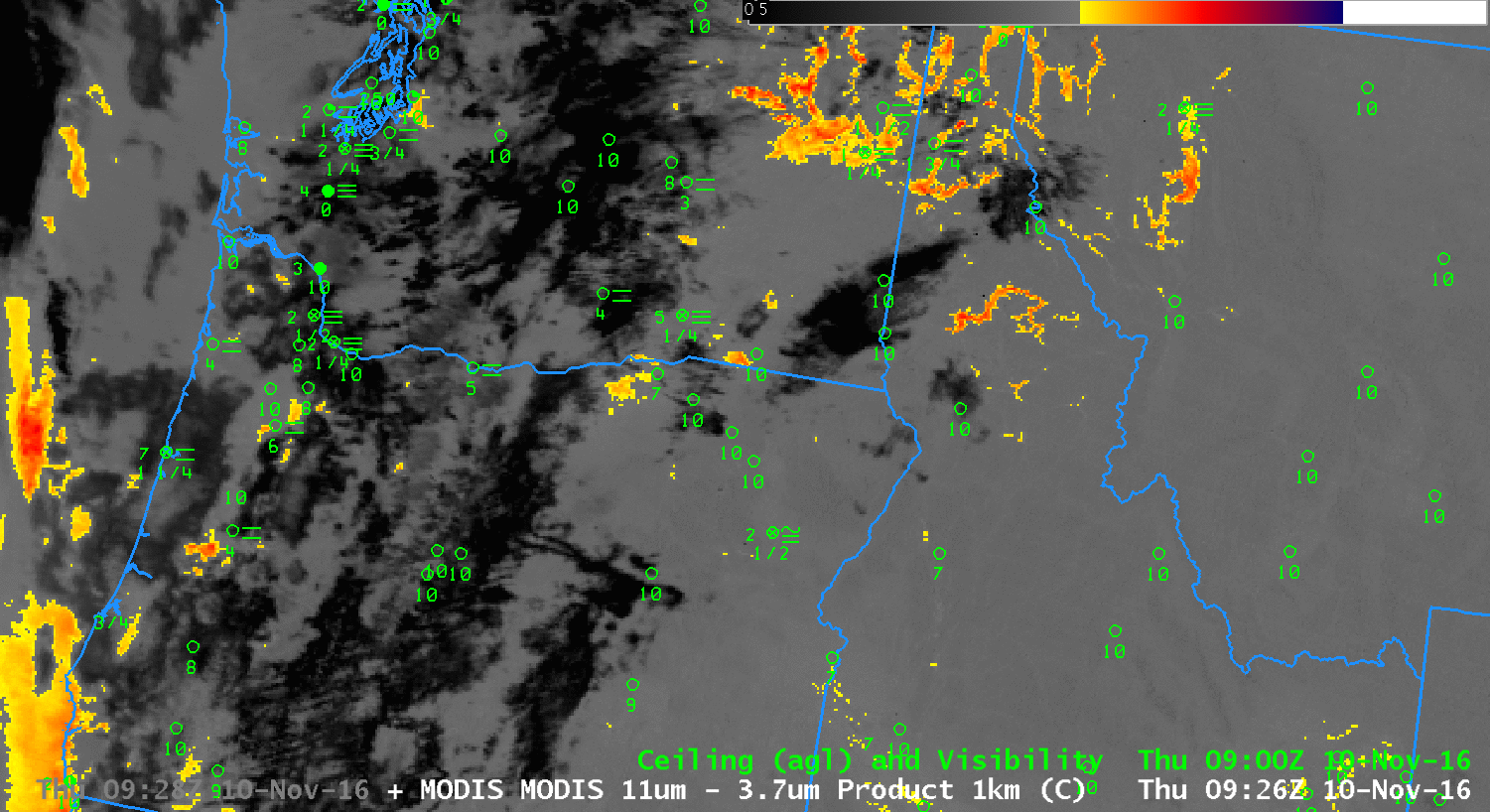
MODIS Brightness Temperature Difference fields (3.7 µm – 11 µm) and MODIS-based GOES-R IFR Probability, 0928 UTC on 10 November 2016 (Click to enlarge)
What does the GOES-based GOES-R IFR Probability field show during the early morning hours of 10 November? The animation below, from 0800-1200 UTC, shows some returns in/around Baker County. It would have been difficult to use this product alone to diagnose this fog feature however. (It did do a better job of diagnosing the presence of fog over northwest Montana and western Oregon where Advisories were later issued).
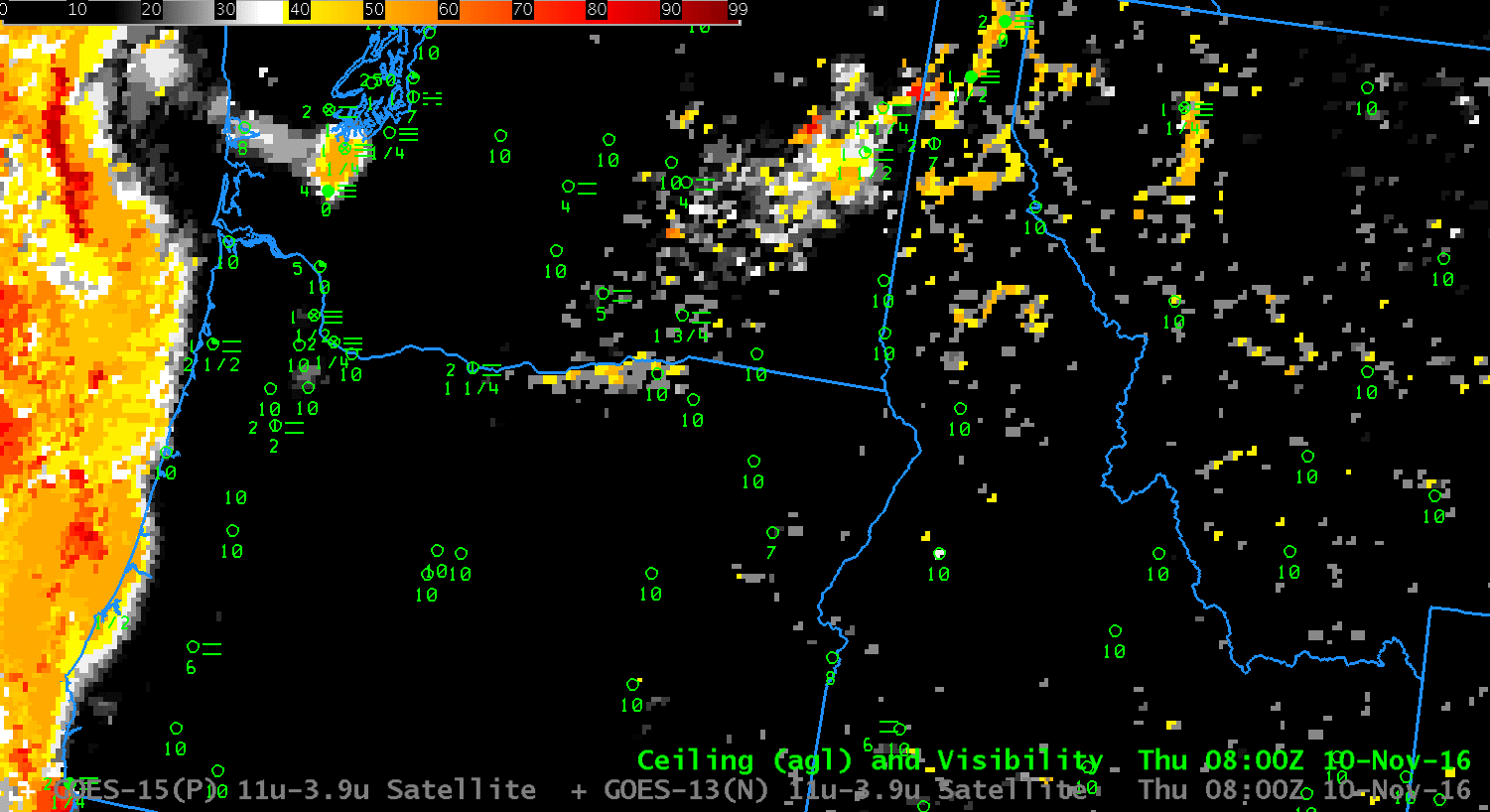
GOES-R IFR Probability fields, hourly from 0800 – 1200 UTC on 10 November 2016 (Click to enlarge)
